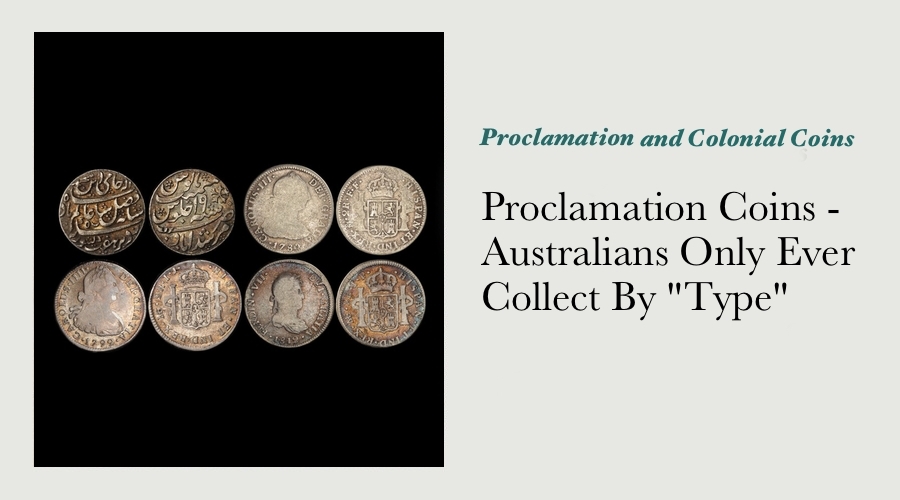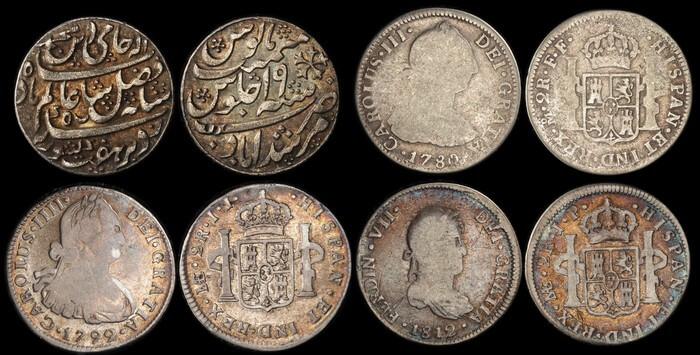Proclamation Coins - Australians Only Ever Collect By "Type"

Proclamation Coins
The results of a recent auction of a world-class collection of Brazilian gold coins has confirmed to me the simple truth that Australians approach the proclamation coin series by “type”, and don’t fully appreciate the true breadth and scope of the series of coins that was framed by Governor King’s proclamation on November 17th, 1800.
We obviously think nothing of the situation where collectors pay tens of thousands of dollars for an Australian penny dated 1930, yet just a few cents for an Australian penny dated 1936 in the same condition.
I’m not convinced yet that Australian collectors think the same way when it comes to proclamation coins however.
Part I of the RLM collection of Brazilian gold coins went under the hammer via Heritage auctions in Chicago on April 18th, 2013. It included no less than 131 gold coins from Portugal’s richest colonial territory, including a good number of coins that wouldn’t be out of place in any collection of Australian proclamation or colonial coins.
All of these coins were struck during the reigns of Pedro II and Joao V (John V), coins struck during later periods will presumably be offered by Heritage at a future points in time.
The most valuable coin in Part I of the RLM collection was a 1729 12,800 Reis (Johanna) struck at the Bahia Mint with what was described as being the Second Shield reverse design. It had been graded by NGC as having AU Details (Repaired), so was obviously more highly prized for the rarity of the designs it featured, rather than the condition it was in - it made just shy of $65,000.
For me, further evidence of the sophistication of the domestic collector market for Brazilian gold coins was the fact that more than a few of the Johannas that were in the RLM collection were graded by NGC as having “AU details”, meaning that although the coin had only minimal wear, it also had a scratch or contact mark of some kind that detracted from the coin’s overall condition. Eight of the coins that were described in this way made more than $10,000 - far more than what we’d expect them to make here in Australia.
In fact, one of these Johannas made more than USD$17,000 - I would’ve thought this was a rather strong price considering the planchet was actually bent!
There were some 31 different 12,800 reis / Johannas in the RLM collection - the most valuable was the 1729 Bahias coin mentioned above, the least expensive was a 1731 dated 12,800 reis struck at the Minas Gerais mint - graded as XF (Hairlines) by NGC, it made just USD$3,818.75.
Interestingly, there were “only” twelve 6,400 reis / Half Johannas in Part I of the RLM Collection - this number of coins doesn’t reflect the diversity of varieties that can be found in this denomination, as my records indicate that there were around 90 different varieties of date, mint, obverse and reverse designs struck during the reign of John V. Just why so few of these coins were this portion of Dr Monteiro’s collection I’m not sure.
The least expensive Half Johanna in Part I of the RLM collection was a 1748 dated coin struck at the Rio de Janeiro Mint and graded by NGC as being in AU58 grade, it made USD$2,585.00 Far and away the most valuable of the Half Johannas in Part I of the RLM collection was the coin described by Heritage as being “Perhaps the finest Minas 6400 Reis in existence” - it was a 1733/23 overdate, graded by NGC as being in AU58 condition. Contested by 5 different bidders, it ended up bringing a mammoth USD$58,750 - more than 10 times the value ascribed to this “type” by the latest Pocket Guide to Australian Coins and Banknotes by Greg McDonald.
The main conclusion for Australian collectors of the proclamation / colonial coin series to draw from the results of this auction is that there is far more to our proclamation coin series than can be expressed in the published Australian price guides.
By way of an example, my research indicates that there were around 245 different Half Johannas struck across two continents (Europe and America), at four mints, under three monarchs, across 74 years and with countless obverse and reverse design varieties.
Both the McDonald’s Pocket Guide and the Rennik’s Guide indentify that different obverse designs were seen on this denomination, however with the space available to them, they obviously can’t go into the level of detail required to list each and every possible variety.
Australian collectors will do well to remember that the figures in our price guides are intended to be representative of the type of coin being discussed, and that collectors in the domestic market for these coins will pay very significant premiums for certain dates, mintmarks and die combinations. Just whether any of these truly rare varieties have already made their way to Australian shores, and are sitting under-appreciated in Australian collections remains to be seen - I know that I for one will be checking more rigorously however!